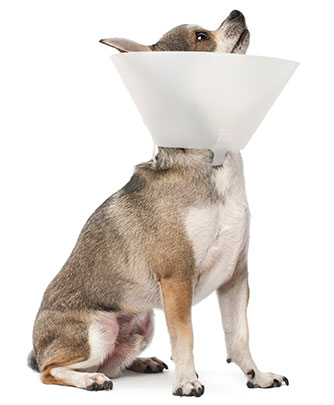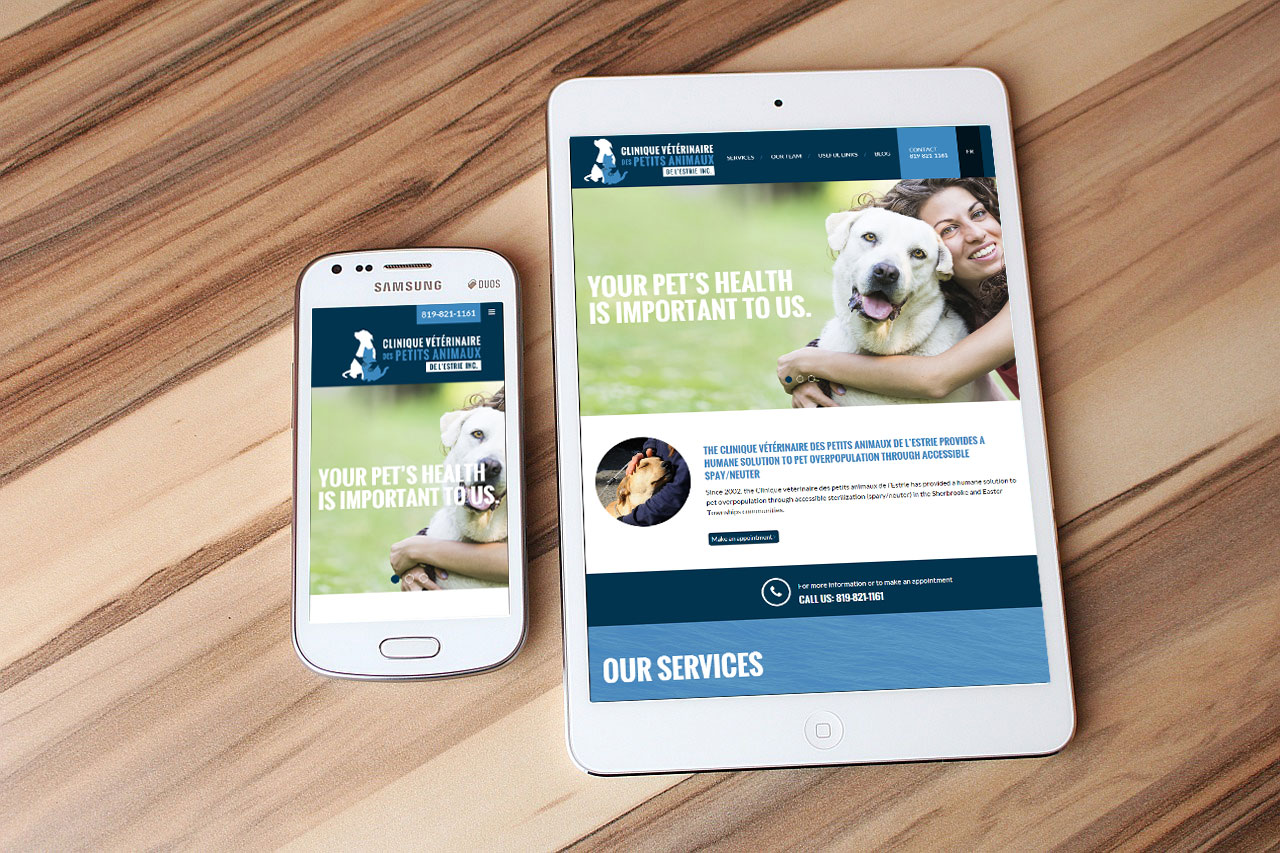
In this post, we answer the questions we hear most often from our clients: Should I have my dog sterilized? Why? and When?
Why should I have my dog spayed or neutered?
Canada’s shelters are filled with dogs and cats that have been abandoned because of overpopulation, unwanted litters, and behavior problems which may be controlled by spaying and neutering our pets. Sterilization will also prevent many diseases, cancers, infections, and other conditions that affect the health and well being of your dog.
What is the best age for my dog to be sterilized?
The answer is not simple; veterinarians don’t yet know all the answers for every size, breed, and lifestyle of dog. We do agree that shelter dogs should all be sterilized before adoption. Early studies have shown that sterilization rates of dogs after adoption are 50% at best; this situation increases the chance that these dogs develop certain behavior problems and diseases. Worse yet, some of these dogs will be used for reproduction, and will contribute to pet overpopulation.
Ideally female dogs should be spayed before the onset of heat cycles. But at the same time, we should allow enough time for optimum development of the skeletal system. Heat cycles may begin as early as 5 months in small breeds, or later (8 to 10 months or more) in large breeds. So, if you own a large-breed puppy, your veterinarian may recommend waiting a bit longer before spaying or neutering, most notably Golden Retrievers and Rottweilers.
What are the advantages of early-age spay/neuter (less than 6 months)?
Male dogs: Advantages of early castration
• Lower cost (the cost of a spay or neuter depends on the weight of your dog)
• Reduction of undesirable behaviors such as inter-male aggression and roaming
• Decreased incidence of surgical and post-surgical complications such as scrotal hematomas and self-trauma of surgical site
• Faster recovery and less pain associated with healing
• Reduces or eliminates prostate problems such as infections and prostate enlargement (which affect 1/50 male dogs)
• Reduces or eliminates testicular cancer, perianal tumors, and perineal hernias
Female dogs: Advantages of early spay
• Lower cost (the cost of a spay or neuter depends on the weight of your dog)
• Eliminates heat cycles which can be a nuisance
• Decreased incidence of surgical and post-surgical complications such as hemorrhage and self-trauma of surgical site
• Faster recovery and less pain associated with healing
• Decreases incidence of mammary cancer, especially if spayed before the first heat cycle
• Prevents development of uterine infection (which can affect 1 out of 4 older, non-spayed female dogs), as well as ovarian cysts and tumors, uterine tumors, and vaginal hyperplasia
What are the disadvantages of early spay/neuter? Are there disadvantages to sterilization in general, independent of age?
Orthopedic considerations:
Recent studies are indicating that certain orthopedic conditions may be more common in certain breeds of dogs, most notably Rottweilers and Golden Retrievers that are spayed or neutered at a very young age.
Dogs that are sterilized at a young age will be taller than their parents and littermates. This is because the cartilage growth plates of their leg bones and pelvis close (replaced by bone tissue) up to 4 months later without the influence of the sex hormones testosterone or estrogen. This change in height affects the angles of the knees and hips, and the dynamics of motion in large, active dogs; this in turn may lead to a higher incidence of knee (anterior cruciate ligament strain and rupture) and hip (dysplasia) problems. Although cruciate ligament injuries are most common in medium to large breeds, they may also affect small dogs.
Therefore, depending on the size, breed, and lifestyle of your dog, we may recommend delaying spay/neuter of some large-breed dogs by a few months, or until puberty is reached (8-12 months).
Rottweilers, both sterilized and intact, have a very high incidence of bone tumors known as osteosarcomas. Independent of the age at which they were spayed or neutered, a recent study showed that 1 in 6 sterilized Rottweilers develop this tumor, compared to 1 in 8 Rottweilers that were not sterilized.
It is important to note that these orthopedic problems are common, and can occur in all dogs, including those that have not been sterilized. It is also important that we balance the importance of these orthopedic conditions in your dog with the benefits of early-age spay/neuter listed above.
Other conditions seen more commonly in spayed or neutered dogs:
Prostate cancer appears to have a higher incidence in castrated dogs than intact dogs; but the overall incidence of prostate cancer is low, affecting approximately 1 out of 300 male dogs.
Estrogen-responsive urinary incontinence results in occasional dribbling of urine by spayed female dogs, often at night. This condition is seen from one to ten years after sterilization, and is usually easily resolved with medication. The incidence of this condition is not necessarily associated with the age at which she is spayed.
Conclusions
Is sterilization appropriate for my dog? Yes! Current practices and recommendations by veterinarians across our country have resulted in lower rates of euthanasia, abandonment, and overcrowding of our shelters. These practices have resulted in better health and increased longevity of our pets.
So, what is the best age to have my dog spayed or neutered? It is impossible to make a single recommendation that is appropriate for all dogs. Instead, we must weigh the known risk factors and benefits based on breed, sex, size, and lifestyle, to determine what is most appropriate for your pet. The Clinique vétérinaire des petits animaux de l’Estrie recommends that you discuss with your veterinarian to decide the best time for spay or neuter of your puppy.


